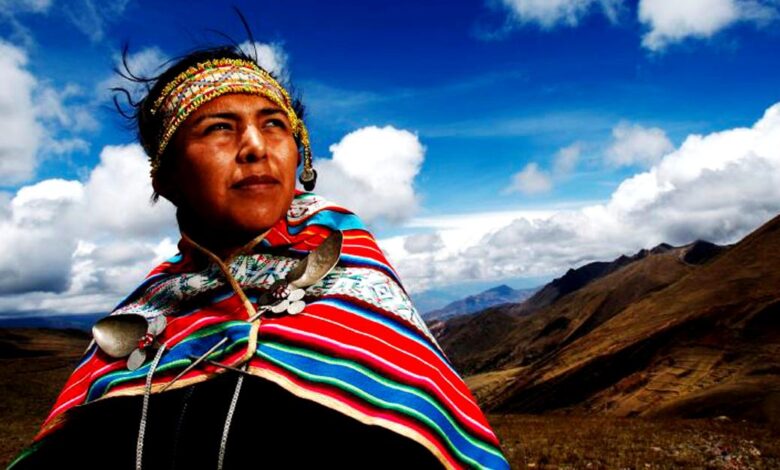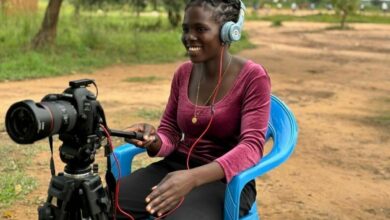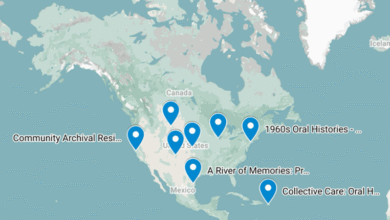Cutting Edge | Indigenous languages: Gateways to the world’s cultural diversity

Indigenous Peoples are on the front lines of climate change, as well as its counterpart, biodiversity loss, as its irreparable damage to the natural environment has a devastating impact on their way of life. Both issues are alarming, with a 2021 Intergovernmental Panel on Climate Change (IPCC) report sounding a “code red for humanity” and a 2019 UNESCO Intergovernmental Science-Policy Platform on Biodiversity and Ecosystem Services (IPBES) report signalling that around 1 million animal and plant species are now threatened with extinction, many within decades. Indigenous Peoples, in particular those who live on small islands, in deserts or in the Arctic region, have been severely affected by climate change. The 2015 Paris Agreement recognises that climate action must “be based on and guided by […] knowledge of Indigenous Peoples and local knowledge systems” whilst the 1992 Convention on Biological Diversity calls on States Parties to “respect, preserve and maintain knowledge, innovations and practices of Indigenous and local communities embodying traditional lifestyles relevant for the conservation and sustainable use of biological diversity”. There is a recognition, however, that implementation is patchy.
Traditional knowledge understood as a living body of knowledge that is developed, sustained and passed on within a community, forms an integral part of Indigenous cultural and spiritual identity. It encompasses knowhow, skills, innovations and practices, as well as traditional cultural expressions, including dances, songs, handicrafts, designs, ceremonies, tales.
The nomadic Fulani pastoralists in the Sahel region of Chad observe the weather and flowering plants to predict the rains and to know where to move with their herds, whilst for centuries, Indigenous Andean farmers have successfully forecasted the forthcoming rainy season and El Niño conditions by observing the Pleiades star cluster. Traditional knowledge continues to innovate and adapt – the hallmarks of vibrant, living cultures. For example, fishermen in Vanuatu have incorporated nylon nets into traditional fishing techniques whilst traditional gothi tree canoes of fishermen in Solomon Islands now use a motor. Meanwhile, the Siã Shanenawa people in the Brazilian Amazon are using drones and artificial intelligence to tackle deforestation.
Indigenous Peoples are often better positioned than traditional science to observe and understand ecosystems and provide information on local biodiversity and climatic change. For example, the Vanua Navakavu in the Fiji Islands documented the vernacular names for over 1,000 species over a 50-year period. Since 1999 Mongolian pastoralists observing the “torgnii hee boroo” (silk embroidery rains) have reported the degradation of pastures due to changes in rain quality and distribution where scientific data show no significant change for the same area and period. Tongan farmers use their traditional calendar to decide when to plant and harvest and their observations of weather change are crucial for understanding climate change impacts and policy responses. In Siberia, Nenets reindeer herders have collaborated with NASA to study weather conditions: NASA provided satellite imagery, while herders provided observations of weather and pasture conditions. The ancestral voyaging knowledge of the Pacific and tradition fish weirs (stone-wall traps that rely on tides) are also being mobilized for ocean biodiversity and climate change monitoring, particularly in the context of the UN Decade for Ocean Science, whose implementation is entrusted to UNESCO. To bridge the Decades for Ocean Science and Indigenous Languages, the Pacific Community (SPC) advocates for the role of Indigenous languages in transmitting ocean knowledge as part of the Pacific Community Centre for Ocean Science – a knowledge hub on ocean science for governments and communities – and through policy advice to the Office of the Pacific Ocean Commissioner.
Indigenous Peoples own, occupy, or use a quarter of the world’s surface area, and it is estimated that at least 1.65 billion Indigenous Peoples and members of local communities live in important biodiversity conservation areas, home to 80% of the world’s remaining biodiversity. A report from the Food and Agriculture Organization (FAO) and the Fund for the Development of the Indigenous Peoples of Latin America and the Caribbean (FILAC) showed that about 45% of the intact forests in the Amazon Basin were in Indigenous territories. Within the first draft of the Convention on Biological Diversity’s (CBD) Post-2020 Global Biodiversity Framework, human rights groups emphasize that the target to safeguard 30% of the world’s biodiversity by 2030 should not lead to the displacement of local communities.

There is an expanding body of knowledge that demonstrates the contributions of Indigenous Peoples in managing land. The Dayek people of Borneo, Indonesia and the Karen of Thailand have used traditional rotational farming practices to regeneratelarge tracts of forest affected by commercial logging. A 2017 joint UNESCO publication Knowing our Lands and Resources also documents examples of Indigenous management of land in Asia, including the begnas ritual system of Sagada, Northern Philippines, forest conservation by the Kaani Indigenous community of Kanyakumari forests, India, Indigenous knowledge of Qanats (aqueducts) in the Tangsayad-Sabzkouh biosphere reserve, Iran and pastureland management in the Kailash sacred landscape, Nepal. A ruling by Panama’s Supreme Court of Justice in November 2020 led to the official creation of a comarca, or protected Indigenous territory, for the Naso Tjër Di people, a decision resting in part on evidence of the role that Indigenous groups play in protecting the environment. The 2018 UNESCO publication Indigenous knowledge and climate change documents other experiences.
Indigenous communities are increasingly central in the sustainable management of natural, cultural or mixed World Heritage sites. The inclusion of cultural landscapes as a new category of World Heritage properties back in 1992 expanded conceptions of heritage, as illustrated by the renomination of New Zealand’s “Tongariro National Park” in 1993 and Australia’s “Uluṟu-Kata Tjuṯa National Park” in 1994 for their cultural values, according to the wishes of the traditional Aboriginal owners. In 2018, UNESCO launched the International Indigenous Peoples’ Forum on World Heritage to strengthen dialogue with Indigenous Peoples and ensure policies respect their rights. Respect for Indigenous people’s rights is increasingly embedded in the management plans of World Heritage sites, such as the site of the Megalithic Circles in Wanar, Senegal or the Okapi Wildlife Reserve, Democratic Republic of the Congo. A recent partnership was also enacted at France’s Lagoons of New Caledonia World Heritage site as part of the Resilient Reefs Initiative, in which the customaries of eight chiefdoms across the island committed to using sustainable methods of turtle fishing in line with their customs but preserving the species threatened with extinction.
Traditional knowledge also contributes to the resilience – particularly food security – of Indigenous communities in the face of environmental degradation, as documented in a 2012 UNESCO study Weathering Uncertainty: Traditional Knowledge for Climate Change Assessment and Adaptation. The publication showed that local and indigenous farmers in Bolivia, China and Kenya who, over the centuries, have maintained different varieties of crops were able to switch to more wind-, pest- and drought-resistant varieties when the impacts from climate change began affecting their yields. The FAO Globally Important Agricultural Heritage Systems promote the importance of traditional management and use of resources to ensure food and livelihood security in the face of climatic variability and natural hazards. Andean agriculture in Peru is an interesting example of the adaptation and knowledge of farmers to their environment for more than 5000 years, intrinsically linked to their strong social organization with their own norms and cultural rituals as the tribute to the “Pachamama” (mother earth) and the “apus” (local gods represented by hills, mountains, rivers and atmospheric phenomena).

The World Health Organization (WHO) as well as international health studies are increasingly recognizing traditional health care and its contribution to SDG 3 (health). During the pandemic, Indigenous communities, many without access to health centres, have addressed COVID-19 symptoms with traditional medicine. In Latin America, for example, Indigenous healers often combine an extensive pharmacopeia with ritual practices to jointly restore bodily and spiritual balance, as noted by the UNESCO International Bioethics Committee in a 2013 report on the ethics of traditional medicine. The Yanomamï of Venezuela, have names for 50 types of bees that provide honey for food or medicine. The Jambi Huasi (Health House) in Otavalo, Ecuador, provides such services in the Quechua language, whilst the pharmaceutical knowledge of some 980 species of the Kallawaya itinerant male healers who practice ancestral medical techniques in Bolivia is one of the richest in the world. The inscription on the UNESCO Lists of Intangible Cultural Heritage of yoga (India), Taijiquan (China), the acupuncture and moxibustion of traditional Chinese medicine or the traditions and practices associated with the Kayas (Kenya) also testify to a growing recognition of traditional health care systems.
Securing intellectual property frameworks, both individual and collective, remains critical to avoid misuse or misappropriation of Indigenous knowledge, as testified by the increasing records of exploitation of such knowledge without the consent of or benefit to the knowledge bearers, notably by the tourism, fashion, food or pharmaceutical industries. This issue was already enshrined in the UNDRIP, which states that Indigenous Peoples have the right to maintain, control, protect and develop their intellectual property over cultural heritage, traditional knowledge, and traditional cultural expressions. The Intergovernmental Committee on Intellectual Property and Genetic Resources, Traditional Knowledge and Folklore, established in 2000 by the World Intellectual Property Organization (WIPO), has served as a forum to discuss intellectual property issues arising in the context of access to genetic resources and benefit-sharing, and protection of traditional knowledge and traditional cultural expressions; a related international legal instrument is currently being negotiated. However, while this legal instrument does recognize Indigenous intellectual property, it focuses on individual intellectual property and product-related patents, rather than community-owned collective property. Tailored regulatory frameworks are needed to encompass the specificity of Indigenous cultures and tackle misappropriation. The UNESCO 2003 Convention for the Safeguarding of Intangible Cultural Heritage, whose concepts and operational tools focus on bearers and communities, explicitly promotes the communities’ ownership of their cultural expressions.
Indigenous Peoples – as repositories of knowledge, practices, worldviews, wisdom, and heritage – play a fundamental role in sustainable development as guardians of vast swathes of biological and cultural diversity. But they can only do so when their rights are protected. The UNDRIP calls for Indigenous Peoples’ participation in all decisions that will affect their lives through their “free, prior and informed consent”, for States to provide effective measures to combat and eliminate discrimination against Indigenous Peoples, as well as their right to remain distinct and to pursue their own visions of economic and social development, thus safeguarding their cultures.

The protection and promotion of Indigenous Peoples’ languages and cultures requires States to fully engage them, and recognize them in their constitutions, laws and policies. At the national level, addressing cultural policies for the benefit of and together with Indigenous Peoples requires a comprehensive and multi-layered approach, encompassing a broad spectrum of dimensions, from the preservation and use of Indigenous languages to the safeguarding of living heritage practices, the protection of Indigenous cultural heritage (including territories and artefacts) to the promotion of Indigenous cultural expressions. While some regions have made progress, recognising cultural and ethnic diversity within countries, including through harmonizing legal and institutional frameworks, policies are still lagging behind to adequately address policy concerns with regard to the safeguarding of Indigenous cultures, which is detrimental to the sustainable development of these communities. Participatory approaches should be developed to support cultural self-determination, notably by including Indigenous practices, protocols and ethical standards in heritage safeguarding mechanisms, supporting participatory inventories of cultural heritage, as well as cross-border cooperation within the same community.
There is an urgent need to enhance the intergenerational transmission of Indigenous knowledge, alongside and within formal education through more systemic educational systems and instruments. Efforts are being made to bring Indigenous language and knowledge into school curricula, as well as to move learning back into the community, thus reaffirming the importance of transmission. Effectively including Indigenous Peoples’ knowledge, holistic worldviews and cultures in the development of education policies, programmes, projects and practices and promoting their perspectives, would provide meaningful learning opportunities that are equally accessible and appropriate for all Indigenous people, as advocated in the recently-launched UNESCO Futures of Education report. Particular attention should be given to priority groups that are critical for transmission, particularly women, youth and the elderly.
Indigenous Peoples have expressed concerns over existing international intellectual property mechanisms as being inadequate to protect Indigenous knowledge and cultural expressions from over-commercialization, misuse and appropriation, including in the digital environment. Concerns identified include the fact that intellectual property systems are focused on protecting the intellectual property of individuals rather than collectives, the view that intellectual property as alienable, and that they are not consistent with Indigenous Peoples’ customary laws and policies related to their knowledge. An expanded view of intellectual property protection could make it possible to protect indigenous cultures against misappropriation and enable communities to control and benefit collectively from its commercial exploitation.
UNESCO Culture Conventions should be further harnessed to support the effective recognition and contribution of Indigenous cultures and languages within their national legal and policy frameworks. As recommended at the webinar on Cultural policies and Indigenous Peoples organised on 30 November 2021 by UNESCO, Culture Conventions should provide a platform to enhance dialogue between Member States and Indigenous Peoples, on the example of the International Indigenous Peoples’ Forum on World Heritage, established in 2018. Specific provisions focusing on Indigenous peoples’ participation, as already introduced in the 1972 and 2003 UNESCO Conventions, may also be strengthened within other Conventions. The impact of the Culture Conventions on Indigenous Peoples and cultures should be further assessed, notably as regards intellectual property, forced displacement, systematic consultation and participation.
The International Decade of Indigenous Languages is also the occasion to strengthen UNESCO’s work, to reinforce the rights of Indigenous Peoples, particularly cultural rights. Thirty years after being awarded the Nobel Peace Prize, the words of K’iche’ Maya (Guatemala) human rights activist, Rigoberta Menchú continue to ring true: “Peace cannot exist without justice, justice cannot exist without fairness, fairness cannot exist without development, development cannot exist without democracy, democracy cannot exist without respect for the identity and worth of cultures and peoples.” This includes the precious identity and rich cultures of all Indigenous Peoples.

Source link




